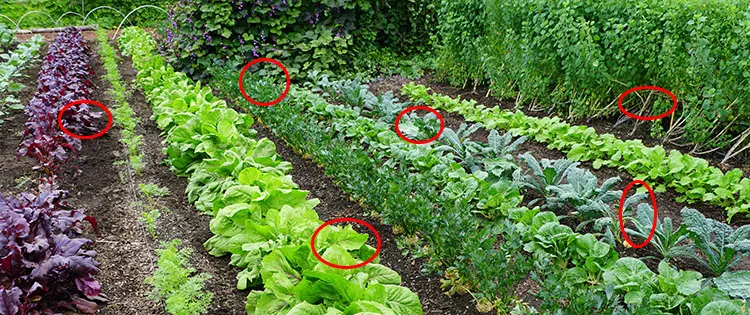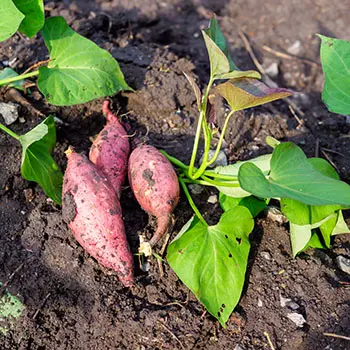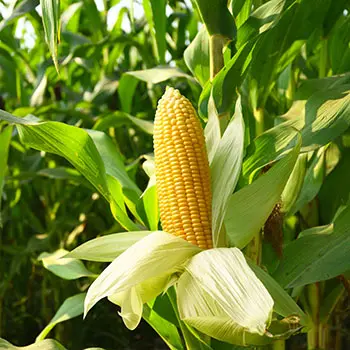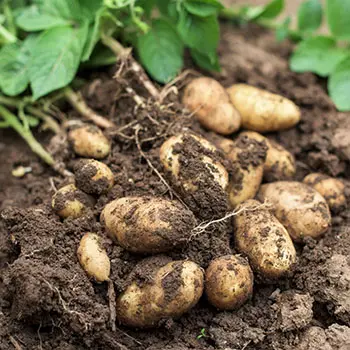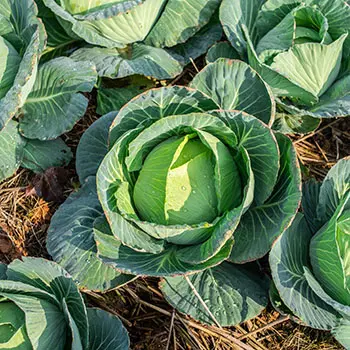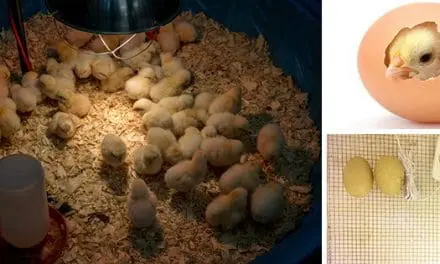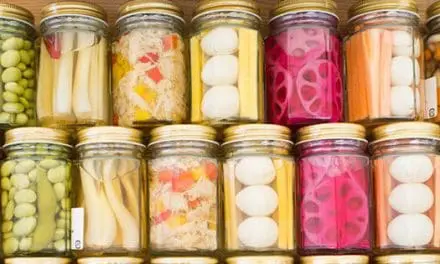Food prices are skyrocketing faster than my blood pressure. The thought of not feeding your family?
It’s gut-wrenching. That’s gotta stop.
By growing the right survival crops, you can do exactly that, and secure your family’s food supply in the process. These crops are not only nutrient-rich, they’re easy to grow.
Banish those nagging worries for good by growing these survival crops:
Amaranth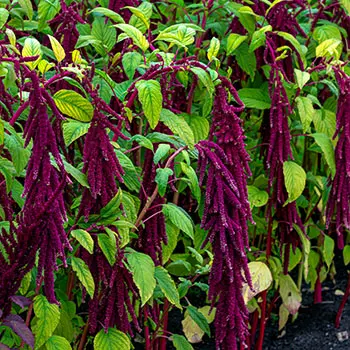
This ancient grain is drought-resistant, nutrient-packed, and serves double duty as both a grain and a leafy green.
Amaranth is packed with nutritional benefits, offering a high protein content, fiber, and essential minerals like iron and magnesium. Just one cup of cooked amaranth grain provides approximately 251 calories and 9 grams of protein, making it a valuable addition to any diet.
When growing amaranth, you have options depending on your goals: try the ‘Red Garnet’ variety if you’re interested in harvesting leaves, or go with ‘Golden Giant’ for its grain yield. Sow seeds directly outdoors after the last frost for best results. Amaranth tolerates poorer soils but thrives in well-drained soil with a pH between 6.5 and 7.5. For harvesting, pick young leaves early for fresh salads, and once the flowers begin to dry, you’ll know the seeds are ready to be collected.
Garlic
This pungent bulb has serious immune-boosting and medicinal properties.
Garlic offers excellent nutritional benefits, including allicin, a compound with natural antibacterial properties, as well as high levels of manganese and vitamin B6.
For growing garlic, plant individual cloves in the fall, around 4-6 weeks before the first frost to give them a strong start. Garlic prefers well-drained, fertile soil with a pH between 6.0 and 7.0. When it comes time to harvest, dig up the bulbs once about half the leaves have yellowed. Cure the harvested garlic for about two weeks in a cool, dry place, and it will be ready for long-term storage—lasting up to 8 months if kept in optimal conditions.
I plant a double row of garlic around my vegetable beds. It acts as a natural pest deterrent and gives me a bumper crop of bulbs!
Related: Never Buy Garlic Again!
Sweet Potatoes 
These orange beauties are like nature’s multivitamin wrapped in a delicious, filling package. They’re my go-to crop for both taste and nutrition.
Sweet potatoes are nutritionally rich, packed with beta-carotene, vitamins A and C, and fiber. A medium sweet potato typically contains about 100 calories and provides around 4 grams of fiber.
To grow sweet potatoes successfully, they thrive in warm weather, requiring at least four frost-free months. Start slips indoors about six weeks before the last expected frost to give them a head start. They prefer sandy, well-drained soil with a pH between 5.8 and 6.2. After harvesting, cure the sweet potatoes for 10 days at a temperature of 80-85°F. Once cured, they can be stored at 55-60°F for up to six months.
Don’t toss those leaves!
They’re edible and packed with nutrients. I add them to stir-fries and smoothies for an extra health boost.
Related: DIY Potato Tower
Beans (Lentils, Black Beans, Kidney Beans)
Beans are the unsung heroes of the survival garden. They’re protein powerhouses that’ll keep you going when times get tough.
Beans are highly nutritious, offering a good source of protein, fiber, and various vitamins and minerals. A half-cup of cooked beans typically provides around 115 calories and 7 grams of protein.
When growing beans, you can choose between pole beans, which are great for small spaces, or bush beans, which are easier to harvest. It’s best to sow them directly in the garden after all danger of frost has passed. Beans thrive in well-drained soil with a pH between 6.0 and 6.8. For dry beans, allow the pods to dry on the vine before harvesting to ensure optimal quality.
Corn
Nothing says “abundant harvest” like a field of corn. It’s a calorie-dense crop that’s versatile in the kitchen and great for livestock too.
Corn is a nutritious food, high in carbohydrates, fiber, and essential minerals. One ear of corn typically provides about 90 calories and 3 grams of fiber.
For growing corn, you can choose varieties like flint corn or dent corn for the best storage options. It’s advisable to sow corn in blocks rather than rows to enhance pollination. Corn thrives in fertile, well-drained soil with a pH ranging from 5.8 to 6.8. For optimal storage, allow the ears to dry on the stalk if possible before harvesting.
Winter Squash
Butternut, acorn, Hubbard – winter squashes are nutrient-dense crops that store like champions. They’re my secret weapon for long-term food security.
Winter squash is a nutritious choice, rich in vitamins A and C, fiber, and antioxidants. One cup of cooked winter squash provides about 80 calories and 7 grams of fiber.
When it comes to growing winter squash, consider varieties such as butternut for versatility and Hubbard for long storage. Plant the seeds directly in the garden after the last frost, ensuring to give the plants plenty of room to sprawl, ideally about 3 to 4 feet between each plant. Harvest the squash when the rind is hard, and the stems begin to dry. For optimal storage, keep the harvested squash in a cool, dry place at temperatures between 50 and 55°F, where they can last for up to 6 months.
Last year, I cured my butternut squash in the greenhouse for two weeks before storing it. They lasted all winter and even into spring!
Potatoes
Potatoes have been keeping folks alive through tough times for centuries, and for good reason.
Potatoes are calorie-dense underground gems that are packed with vitamin C, potassium, and fiber. One medium potato provides about 160 calories and 4 grams of fiber.
For successful potato cultivation, consider the best varieties for your climate: ‘Yukon Gold’ thrives in warmer areas, while ‘Kennebec’ is suited for cooler regions. Potatoes prefer well-drained, slightly acidic soil with a pH of 5.8 to 6.5, which should be enriched with compost for optimal growth. When planting, place seed potatoes about 4 inches deep and 12 inches apart. After harvesting, store your potatoes in a cool, dark place at around 40°F, where they can last for up to 6 months.
I’ve had great success with the “tire method” – stacking tires and adding soil as the plants grow. Last year, I harvested 50 pounds from just three tire stacks!
Related: How To Grow An Endless Supply Of Potatoes
Kale
This hardy green is a true survivor. It can withstand frost and even keep producing through mild winters.
Kale is a nutrient powerhouse, packed with vitamins K, A, and C, along with antioxidants. One cup of raw kale provides approximately 33 calories and 2 grams of fiber.
When growing kale, consider the best varieties for your needs: ‘Lacinato’ is known for its cold hardiness, while ‘Red Russian’ offers tender leaves. You can start seeds indoors about six weeks before the last frost, or you can direct sow in late summer for a fall or winter crop. Kale thrives in rich, well-drained soil with a pH between 6.0 and 7.0. For harvesting, pick the outer leaves as needed while allowing the center of the plant to continue producing.
I’ve had kale survive under a foot of snow with just a simple cold frame.
Cabbage
This versatile brassica stores well. Plus, it’s the key to making your own sauerkraut – a probiotic-rich survival food.
Cabbage is a nutritional powerhouse, high in vitamin C, fiber, and antioxidants. One cup of raw cabbage contains about 22 calories and 2 grams of fiber.
When it comes to growing cabbage, consider your variety of options. ‘Danish Ballhead’ is excellent for storage, while ‘Savoy’ is known for its cold tolerance. Start seeds indoors six to eight weeks before the last frost to get a head start. Cabbage thrives in rich, well-drained soil with a pH level between 6.5 and 6.8. Once harvested, cabbage can last for three to four months when stored under root cellar conditions, making it a great choice for long-term storage.
I’ve got a dedicated “kraut patch” where I grow cabbage specifically for fermentation. Nothing beats homemade sauerkraut on a cold winter day!
Carrots
These colorful root veggies are packed with essential nutrients. They’re a staple in my survival garden.
Carrots are nutritious and rich in beta-carotene, fiber, and antioxidants. A medium carrot contains approximately 25 calories and 2 grams of fiber.
When it comes to growing carrots, you have a great variety of options. ‘Danvers’ is ideal for storage, while ‘Nantes’ is known for its sweeter flavor. For optimal growth, sow the seeds directly in the garden 3 to 5 weeks before the last frost. Carrots thrive in deep, loose, well-drained soil with a pH level between 6.0 and 6.8. For long-term storage, keep harvested carrots in damp sand in a root cellar, where they can last for up to six months.
Honorable Mentions
While my top 10 selections shine brightly, these runners-up are also worthy of a place in your survival garden:
Jerusalem Artichoke
Also known as sunchokes, these tubers are incredibly resilient, almost like the T-1000 of the plant world. They are packed with inulin, a prebiotic fiber that promotes gut health, and they thrive in a wide range of climates. A great tip for growing them is to plant them in a contained area, as they tend to spread rapidly. I have a patch that’s been producing consistently for years with virtually no maintenance. Talk about low upkeep!
Turnips
Fast-growing and versatile, turnips offer two crops in one: both the roots and the greens. You can use the roots as a source of carbohydrates and the greens for added vitamins. With a quick turnaround time, you can go from seed to harvest in as little as 6 to 8 weeks, making them a fantastic addition to your garden.
Time to plant your survival garden is now, before it’s too late. Take a good, hard look at your current garden space.
Got some room between those decorative flowers? Maybe it’s time to tuck in some kale or carrots.
That sunny spot by the fence? Sounds like the perfect place for a Three Sisters garden of corn, beans, and squash.
The Ultimate Survival Crop You Need On Your Property
Do You Know Why You Should Never Put A Tall Fence Around Your House? (Video)
How Much Money I Saved in a Year By Growing My Own Food

